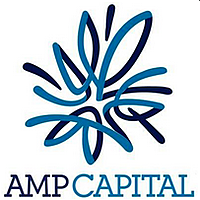4 factors that underpin infrastructure returns

AMP Capital
Market dominance
Infrastructure assets, such as airports, water treatment plants, toll roads, ports and energy transmission, tend to operate in dominant or monopolistic market conditions. Market dominance usually comes with the strategic position infrastructure assets often hold as key elements that support and sustain economic activity. This means barriers to entry tend to be very high.
Strong credit backing
Many infrastructure investments attract strong credit ratings due to their economic significance, the fact many are government-backed assets and due to the size and quality of private operators in the infrastructure sector. For investors, the higher the credit quality, the more stable and predictable the quality of the cash flow these assets generate.
Long, predictable inflation-linked contracts
Because of their importance and scale, direct infrastructure assets tend to have long contracts that capture increases in inflation during the course of their life. Such contracts can typically have 30 year plus terms. Revenues that these assets typically generate are therefore largely hedged for inflation, a benefit that passes through to investors in these assets.
Natural hedging across the economic cycle
The performance of direct infrastructure assets is generally split into regulated/availability assets (where payments to infrastructure owners are pre-agreed regardless of how little or how much the asset is used), and Gross Domestic Product (GDP) assets (where performance is largely linked to economic growth because as the economy expands these assets generate more revenue). GDP assets are also referred to as patronage assets because their performance is largely dependent on how much they are used.
Outlook
Looking to 2016, we believe deal flow will remain highest in the largest and deepest infrastructure markets of Western Europe and North America although we are seeing more and more investors looking to Eastern Europe for value due to the competitiveness of deal flow in other regions and subsequent pricing pressure. Investors are continuing to recognise the value in infrastructure’s attractive combination of stable yield and strong potential for capital growth. While we continue to see a preference amongst the largest investors to invest direct directly in assets, unlisted funds still remain the preferred route to market for the whole investor universe.
Final thoughts
Infrastructure assets generally provide stable, long-term cash flow returns because of the predictability of long-term contracts or regulation underpinning their operation; prices and contract payment terms that generally rise with inflation; the quality of the counterparties who service the payments for usage of infrastructure assets; and in many cases, dominant market positions that capture most or all of the market share for the provision of certain services within specific sectors or regions.
When the performance characteristics of direct infrastructure are blended in a portfolio, they offer a natural performance hedge during the economic cycle. In simple terms, this natural hedge means even when the economy is underperforming, regulated assets continue to perform, effectively providing a downside hedge in volatile and uncertain markets.
Article contributed by AMP Capital (VIEW LINK)
5 topics

AMP Capital is one of the world's leading investment houses, with a 160-year pioneering heritage. Our enviable track record in real estate and infrastructure is coupled with deep expertise in fixed income, equities and multi-asset investments.
Expertise

AMP Capital is one of the world's leading investment houses, with a 160-year pioneering heritage. Our enviable track record in real estate and infrastructure is coupled with deep expertise in fixed income, equities and multi-asset investments.
